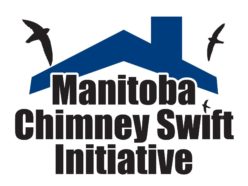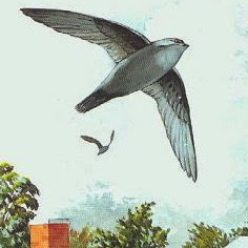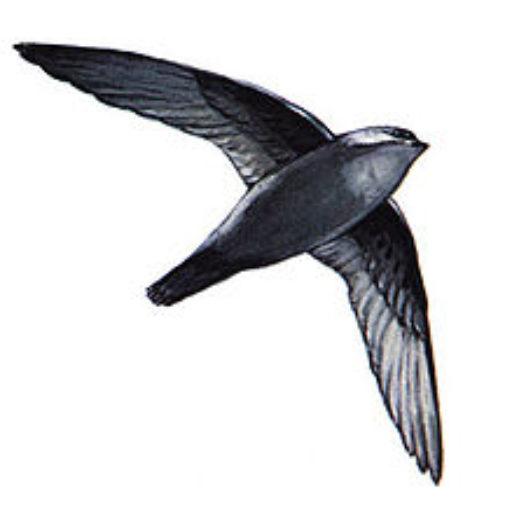The swift approach of the 2023 monitoring season!

Hi folks! It’s been a long winter but it’s finally feeling like spring out there! As the emergence of leaves and the blooming of flowers approach, so too does the return of our Chimney Swifts. Based on eBird reports, they are slowly reaching/passing the Canadian border. You can view updates on CHSW movement at the following link: Chimney Swift – Species Map – eBird
We’ve been hard at work on our monitoring plan for the 2023 season, because we will be trying a slightly different approach than in previous years! This year, MCSI monitoring nights will be held on the same evenings as National Roost Monitoring Program (NRMP) nights (a total of four evenings during a two-week period), with the option to monitor on different dates throughout the spring/summer based on the chimney category as well as the volunteer’s availability and desired time commitment (more details below).
Our MCSI/NRMP monitoring nights for 2023 will be on May 24th, May 28th, June 1st, and June 5th. In case of poor weather, the rain day will be the following day.
Similar to previous years, our monitoring efforts will focus on three categories of chimneys. This includes 1) chimneys that host larger groups of swifts (part of the NRMP), 2) chimneys that are priority for confirming/reaffirming ‘residence’ status, and 3) chimneys that are routinely monitored by MCSI volunteers. Chimneys in category 1 should be monitored on MCSI/NRMP nights, while the chimneys in categories 2 and 3 can be monitored on MCSI/NRMP nights and/or anytime throughout the spring/summer on a schedule that suits the volunteer.
1) NRMP sites
Select chimneys that usually host larger groups of Chimney Swifts (4 or more swifts) are part of the National Roost Monitoring Program (NRMP). These NRMP chimneys only need to be monitored on the four NRMP evenings at the start of the season.
Areas with NRMP chimneys to monitor include:
- Carman
- Otterburne
- Selkirk
- Souris
- Portage la Prairie
- La Broquerie
- Dauphin
- St Jean Baptiste
- Winnipeg – Fort Rouge
- Winnipeg – St James
2) Chimneys that are priority for confirming ‘residence’ status
Sites are confirmed as ‘residences’ when they have hosted Chimney Swifts at least once in the last 3 years. Based on this criterion, we have gone through our database and compiled a list of sites that are high priority for monitoring this year. By confirming use of these chimneys by swifts, the structures can be protected as Chimney Swift habitat into the future. These chimneys can be monitored on NRMP/MCSI nights as well as anytime throughout the spring/summer.
Areas with priority chimneys to monitor include:
- The Pas
- Manitou
- Morden
- Selkirk
- Winnipeg – City Centre
- Winnipeg – Elmwood
- Winnipeg – Fort Garry
- Winnipeg – Fort Rouge
- Winnipeg – North End
- Winnipeg – North Kildonan
- Winnipeg – River Heights
- Winnipeg – St Boniface
- Winnipeg – St James
- Winnipeg – St. Vital
- Winnipeg – West End
3) Chimneys routinely monitored by MCSI
Many chimneys that are typically used as nesting habitat by swifts have been monitored annually by MCSI volunteers. Monitoring these chimneys allows us to maintain the MCSI database and continue to gather data on where, when, and how chimneys are being used by swifts around Manitoba. These chimneys can be monitored on NRMP/MCSI nights as well as anytime throughout the spring/summer. These chimneys are not as high priority to monitor as the chimneys in category 2.
We realize that weekly MCSI monitoring in addition to NRMP nights is a big time commitment, so we hope that this approach will make monitoring more sustainable for our volunteers and will allow for flexible monitoring commitments throughout the season. During the remainder of the spring/summer, volunteers can continue to monitor on the schedule and frequency that works for them. This monitoring could include regular monitoring at a specific site and /or ‘special assignments’, such as one-time visits to chimneys that are a priority for confirming ‘residence’ status. Throughout the season, we will use the blog to update this list of chimneys that need ‘residence’ confirmation so that volunteers can be made aware, in real time, of which sites have been checked off our priority list and which sites still need confirmed use by swifts. Volunteers can move around and make the most of their time to confirm the most sites. Almost like a treasure hunt of sorts! A treasure hunt where the prize at the end is protecting important habitat for Chimney Swifts.
If you are looking for a chimney to monitor in your neighbourhood or are willing to travel to a site, send an email to myself (Marissa) at mbchimneyswift@gmail.com. We have more chimneys than monitors each year, and we’d love to have you join our effort to help the Chimney Swift.
Monitors from previous years – please confirm that you will be participating in the 2023 program and if you’d like to keep monitoring the same site(s) as last year or if you would like a different site. I would be more than happy to discuss with you what the most suitable sites would be based on your location, availability, and our monitoring priorities.
NRMP nights and the MCSI nights use the same monitoring protocol and data sheet. We ask that volunteers watch their site starting 60 minutes before sunset until 30 minutes after sunset (90 minutes total). In that time volunteers record numbers of swifts seen in the air, as well as the time and number of swifts that enter and exit the chimney.
The Manitoba Chimney Swift Initiative has made available on-line survey forms and protocols for the 2023 monitoring season:
2023 MCSI Monitoring Form –Word
https://www.mbchimneyswift.com/Documents/current_datasheet.docx
2023 MCSI Monitoring Form –pdf https://www.mbchimneyswift.com/Documents/current_datasheet.pdf
2023 CHSW Monitoring Protocol – https://www.mbchimneyswift.com/Documents/PROTOCOL_2023.pdf
VOLUNTEER RESOURCES are posted on our MCSI website at: http://www.mbchimneyswift.ca/resources.html . There are links to video clips, research/general interest articles, and the all-important “Dashboard Placard” which identifies you as an MCSI volunteer.
— Marissa Berard














